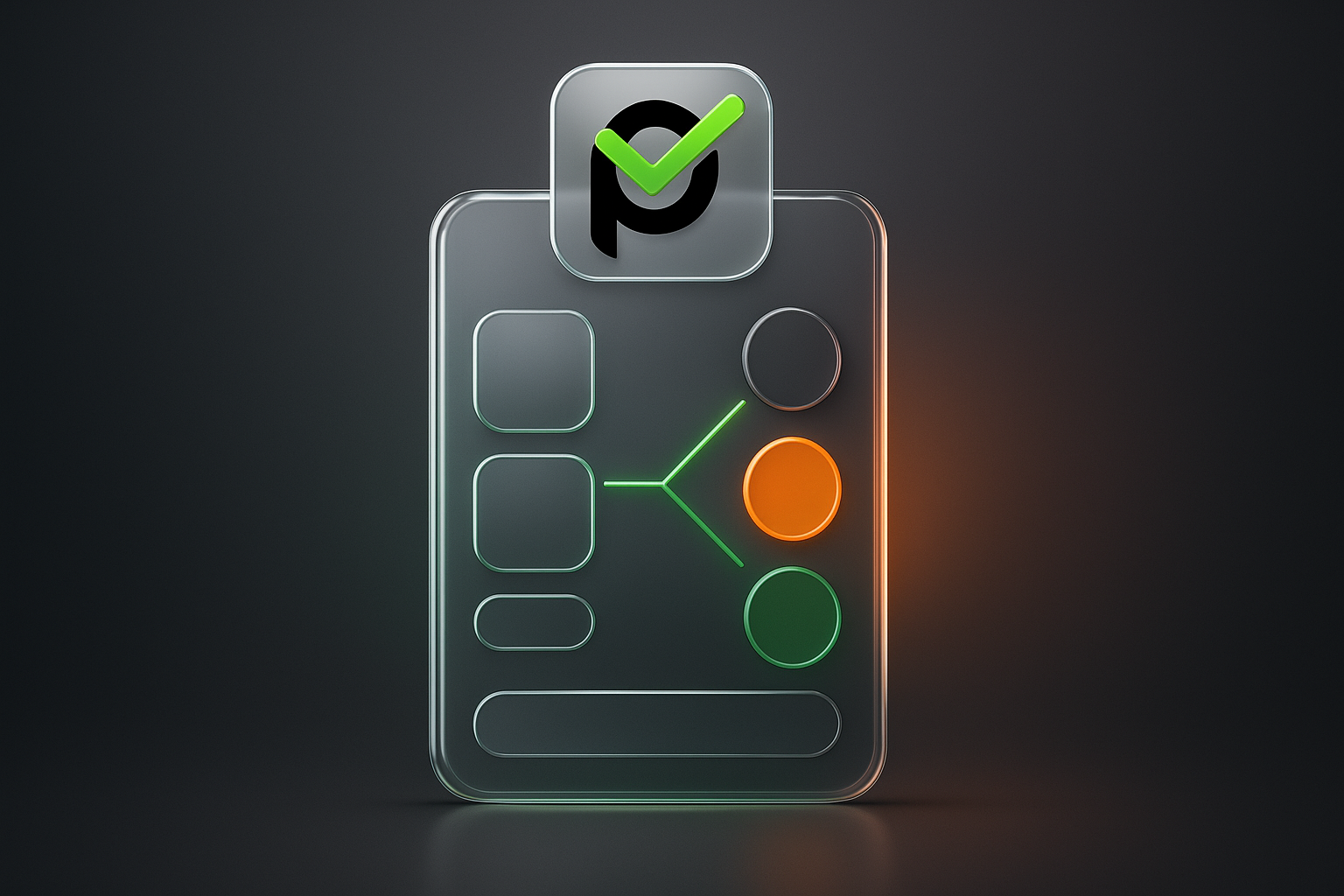
Field service customer experience is often the part of the customer journey that makes the biggest impression — and sometimes the one companies understand the least. When a technician shows up at someone’s home or business, the expectations are high: arrive on time, be prepared, communicate clearly, fix the issue, and leave the customer feeling confident. That moment shapes field service customer experience more than any ad, sales pitch, or support message ever could. And when this experience is strong, customers remember it. When it goes poorly, they remember it even longer.
Most teams already know how much pressure sits on these interactions, but the bigger challenge is understanding why they matter so much. A solid field service experience drives loyalty, referrals, and repeat business, while a weak one quietly increases churn. Small things — a late arrival, unclear communication, no update about delays — quickly erode field service customer satisfaction. Customers don’t always say it out loud, but they feel the friction.
Today, measuring and improving CX has become a practical necessity rather than a “nice-to-have.” Companies that track the right signals — response times, expectations, effort, the technician’s communication — learn much faster what needs fixing. And when teams use tools that support transparency, predictable workflows, and real-time updates, the customer experience becomes steadier almost automatically. In field service, trust is earned visit by visit, and the companies that treat CX as a discipline see the strongest long-term impact.

Field service customer experience is the sum of everything a customer feels before, during, and after a technician’s visit. It matters because these moments shape trust more directly than any marketing message ever could. When the visit goes smoothly — the arrival is on time, communication is clear, and the work is done professionally — the customer walks away confident. When it doesn’t, even small issues can make the entire service relationship feel unstable.
A customer’s overall journey has many moving parts: the website, the booking process, the call center, the follow-up messages. Field service experience is only one chapter in that story, but it’s often the chapter people remember most clearly. A technician’s punctuality, tone, preparedness, and transparency usually define whether the customer feels respected or frustrated. Even when the broader customer experience is polished, a weak field visit can overshadow everything else.
Every field service journey has a few “moments of truth” that make or break the customer’s impression. The first is scheduling: how easy it is to book, how clearly the expectations are set, and whether the promised time feels realistic. The second is the technician’s arrival — especially whether the customer receives updates or has to guess when someone will show up. These small signals shape field service customer satisfaction long before the work begins.
Another defining moment happens during the visit itself. Customers pay attention to how the technician communicates, whether they explain the issue in plain language, and if they seem prepared. Planado reinforces these moments with real-time updates, status changes, and clear job information that technicians can rely on. The final moment of truth is the wrap-up — the summary, photos, or next steps the customer receives. These touches create the lasting picture of field service customer engagement and determine whether the customer will return or look elsewhere next time.
Customers tend to judge service companies by the moments that feel most personal — the technician’s arrival, the way the issue is explained, how smoothly the visit goes. When these touchpoints go well, field service customer satisfaction rises quickly, and customers stay loyal without much convincing. When they go poorly, the relationship becomes fragile, and even a small disappointment can turn a repeat client into a one-time visitor. Strong satisfaction is one of the most reliable drivers of retention and long-term revenue in field operations.
A surprising amount of customer satisfaction comes down to three simple things: fixing the issue on the first visit, showing up when promised, and keeping the customer informed. The first-time fix rate is especially important — nothing frustrates a customer faster than realizing the technician has to return because a tool, part, or detail was missing. On-time arrival matters just as much, because waiting without updates creates tension long before the job even starts.
Customers rarely say the words “effort score,” but they feel it all the time — every unnecessary phone call, every moment they aren’t sure where the technician is, every repeat explanation. Reducing effort is one of the easiest ways to strengthen field service customer engagement, simply because people appreciate interactions that don’t drain their time or patience. When communication is predictable and information is clear, even the more complicated jobs feel manageable.
This is where the right tools matter. Automated notifications remove the guesswork around arrival times. Two-way communication channels prevent long hold times or message threads scattered across apps. A simple customer portal lets people see updates without contacting support at all. Combined, these changes make the entire service process lighter and naturally support higher field service customer satisfaction. Customers remember the experience as “easy,” even if the work itself was complex.
The simplest way to understand how customers really feel about your service is to track a few metrics that actually match what happens in the field. Not every number tells a useful story, so the goal isn’t to measure everything — it’s to measure the signals that reflect real customer reactions. Strong customer satisfaction metrics show whether the team meets expectations, whether communication feels clear, and whether the customer feels the visit was worth their time.
The most common starting point is CSAT, since it captures the customer’s immediate reaction right after the job. NPS helps you understand long-term loyalty — whether customers would recommend your company after several visits, not just one. Then there are operational metrics that quietly shape field service customer experience behind the scenes: first-time fix rate, on-time arrival rate, effort score, and technician quality scores. These numbers reveal friction points long before customers complain about them.
The important part is to look at these metrics together instead of chasing one number. A high CSAT with a low first-time fix rate, for example, means the customer was satisfied today but might lose patience after a few repeat visits. A strong NPS combined with a weak effort score shows that customers like your technicians but struggle with communication or scheduling. When you track the right customer satisfaction metrics consistently, patterns appear — patterns that directly explain how people experience your service, and what needs to change next.

Field service customer engagement isn’t about “delighting” customers with something unexpected — it’s about keeping them informed, reducing uncertainty, and making every step of the process feel predictable. When customers don’t have to wonder where the technician is, what’s happening with the job, or how long things will take, they naturally become more confident in the service. Small, timely touches often create more impact than any large-scale “experience” initiative.
A big part of customer engagement comes down to something surprisingly simple: keeping people in the loop. Customers don’t need long explanations — they just want to know what’s going on. A short message that the technician is heading their way, a quick “running late by 15 minutes,” or even a note that the job has officially started often makes them feel more relaxed. Most people have had at least one bad experience where they waited for hours with no updates, so even small bits of communication feel like a breath of fresh air.
What helps teams here is having tools that take these little tasks off their shoulders. In Planado, the technician doesn’t have to stop to type anything — the status changes trigger updates automatically. When they tap “En Route,” the customer gets notified. When the job starts, another update goes out. It’s a quiet system, and it doesn’t interrupt the technician’s workflow, but on the customer’s side it feels like someone is paying attention. Over time, this steady flow of small signals builds trust, and field service customer engagement grows almost without extra effort.
Customers want easy ways to get information without calling support. A self-service portal that shows the technician’s status, job history, or next steps can save them a lot of frustration. Even a simple page where they can check their appointment time reduces effort across the entire experience. The goal isn’t to replace human interaction — it’s to remove unnecessary friction.

Field customer service isn’t a single moment — it stretches across the entire timeline of the visit. Customers start forming impressions long before the technician arrives, and those impressions continue to evolve while the work is underway and even after the job is closed. Each stage has its own expectations, small risks, and opportunities to make the experience feel more organized and predictable.
Customers usually start forming an opinion long before the technician arrives. Most people just want to know the basics — who’s coming, roughly when, and whether they need to prepare anything. It doesn’t have to be a big, polished message; even a short reminder or a quick “your appointment is still scheduled” helps ease the waiting. When the timing feels realistic and not overly optimistic, the whole visit tends to unfold with fewer surprises.
Planado quietly supports this early stage. When a technician hits “En Route,” the customer gets a small nudge that things are moving. It’s a simple update, but it stops people from wondering if the appointment was forgotten — something everyone has experienced at least once. Even showing the technician’s name or a small bit of info helps create a smoother field service customer experience before the visit actually begins.
Once the technician arrives, the tone of the whole visit shifts. Customers pick up on small things — how the technician introduces themselves, whether they explain what they’re doing, and how prepared they seem. You don’t need anything dramatic here; simple transparency works surprisingly well. A quick explanation of the issue or a brief outline of the next steps immediately builds trust.
Photos and notes add another layer of reassurance. With Planado, technicians can document the job as they go, which helps customers understand what was found and why certain decisions were made. These touches support a stronger field service experience overall and help maintain genuine field service customer satisfaction even when the issue is more complex than expected.
After the technician leaves, the service isn’t really “finished” from the customer’s perspective. A short summary, a few photos, or a clear list of next steps helps close the loop and prevents confusion later. Customers often appreciate a simple check-in message or a quick link to leave feedback. It shows that the company cares about how the visit felt, not just what work was completed.
Over time, these follow-ups play a big role in field service excellence. They also make it easier for the team to understand how customers react to different types of jobs. Feedback — even one-line comments — creates a natural feedback loop that helps improve the next visit. And because customers don’t have to chase answers themselves, engagement tends to stay high

Most customers don’t see the internal processes behind a service visit — they only feel whether the experience was smooth or confusing. Planado helps teams bring order to this invisible side of the job. When a technician opens a task, everything they need is already structured: notes, checklists, materials, photos, time tracking. They don’t have to invent a workflow on the spot. That alone makes the visit feel more predictable for the client.
Planado’s notifications also do a lot of quiet work in the background. When a technician taps “En Route” or “Started,” the customer gets an update automatically. They’re not left waiting in silence, trying to guess whether someone is actually coming. Small bits of information like these remove tension long before the technician reaches the door. And for many customers, this kind of transparency is half the experience.
Across dozens of daily jobs, these touches quietly build field service excellence. Customers stop asking, “Where is the technician?” or “What did they actually do?” because the answers are already there — in real time, without extra effort from the team. If you're working to improve field service customer satisfaction, start by reviewing the metrics you already track. Look at your first-time fix rate, communication gaps, and where customers tend to struggle. Even a few small adjustments — like tightening up notifications or simplifying your checklists — can have an immediate impact on how the service feels.
Field service customer experience rarely hinges on one big thing. It’s usually a mixture of small impressions — the way the technician talks to the customer, whether the timing feels honest, how clearly the next steps are explained. When these simple parts line up, people walk away with the sense that the company actually has its act together. And that feeling tends to stick much longer than any discount or one-time gesture.
Improving field service customer satisfaction doesn’t require a grand strategy. Most teams start by noticing where customers feel lost or unsure, then removing those rough edges one by one. Sometimes it’s the arrival window that creates headaches. Sometimes it’s the lack of photos after the job. Sometimes customers just want someone to acknowledge their message instead of leaving it hanging for hours. Little things like these are what shape loyalty in the long run — not slogans or polished scripts.
When the basics are handled consistently, trust builds almost on its own. Jobs finish with fewer surprises, conversations feel calmer, and customers stop double-checking every detail because they start to believe the team will follow through. That’s really what strong service looks like in the field: not perfection, but a steady, reliable rhythm that makes both sides feel confident. If you’re trying to make your customer journey feel smoother without adding more work to the team, take a look at how Planado handles updates, job timelines, and post-service details. Try running a few visits through it and see how the tone of customer conversations changes when the information simply arrives on time.
Which customer satisfaction metrics should a field service team track? Most teams start with a few customer satisfaction metrics that actually reflect what happens in the field. CSAT and NPS show how people feel right after the visit and whether they’d return. Looking at first-time fix rate or on-time arrival adds context and helps explain the story behind the numbers.
What strategies help build long-term field service customer engagement? The simplest strategy is to stay present in the process: short updates, honest timing, and clear next steps. When customers know what’s going on, they stop feeling the need to check in constantly. Over time this steady communication turns into stronger field service customer engagement without trying to “wow” anyone.
How do you measure field service customer engagement effectively? Start by looking at moments when customers interact with your team — scheduling, updates, follow-ups — and measure how easily each one goes. If people need fewer calls or fewer clarifications, engagement is improving. Pairing this with field service customer satisfaction scores gives a clearer picture of how the experience actually feels.
What practices define field service excellence today? Field service excellence usually comes from consistency rather than impressive gestures. Customers notice when technicians show up on time, explain things plainly, and close the loop after the job. When these basics stay reliable, your field customer service naturally feels stronger at every visit.
